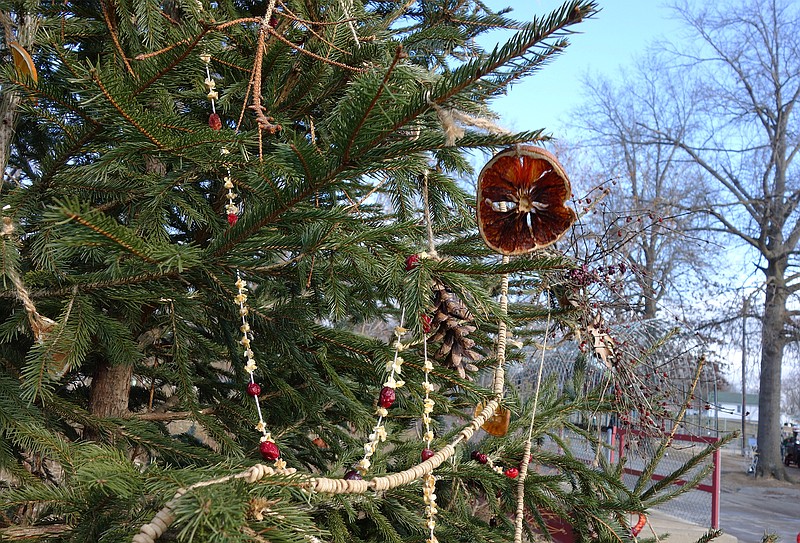During the Christmas season, humans enjoy cookies and other seasonal goodies.
Birds deserve a Christmas treat, too, according to the Missouri Department of Conservation's Emily Crawford. Wednesday, she taught a virtual class on how to make bird-friendly "cookies" from birdseed and a few other ingredients.
Many species of birds migrate through Missouri as they head south for the winter, or settle here to enjoy the state's relatively mild winter weather. With natural food sources frozen, buried in snow or devoured by other creatures, the food put out by humans becomes a valuable resource to the migrating birds, who need to eat many calories to power their flight.
"A way we can appreciate (birds) is by feeding them as they travel through in the winter and enjoying them from our backyards," Crawford said.
Previously, Crawford taught a class on how to make wildlife-friendly garlands; you can find the instructions here.
Gather
Ingredients
2 packets unflavored gelatin (Crawford uses Knox brand)
2 tablespoons Agave nectar or corn syrup
1/2 cup cold water
1/2 cup boiling water
2.5 cups mixed birdseed
Optional: Assorted small berries, such as American beautyberries or native honeysuckle berries
Equipment
Mixing bowl
Wax or parchment paper
A cookie tray, roasting pan or large plate
8-12 cookie cutters (plastic or metal)
Plastic straws snipped into 2 inch-long segments
Hemp or cotton string
Go
Mix together the gelatin and cold water until the two are fully incorporated. Then add the boiling water, syrup and birdseed and continue mixing until the seeds are evenly coated. It'll look pretty watery and loose, Crawford said, but as it cools it will thicken.
"When I did my test batch of this I didn't believe in the setting power of gelatin and I didn't think it would set right," she said.
Cool the mixture in the fridge for 10 minutes; it should be thick enough to hold its shape. Meanwhile, line your cookie sheet with the wax or parchment paper, and arrange the cookie cutters on top.
After the 10 minutes is up, use a spoon to scoop and pack the seed mixture into the cookie cutters.
"You want to fill those cookie cutters up to the top rim and as you're filling, you want to press down so it fills all the crevices," Crawford said.
Left too loose, the mixture will crumble when unmolded.
Crawford used small berries to decorate her bird cookies, pressing them into the top surface of the molded mixture.
"Those berries will make cute sprinkles on your quote-unquote cookies and they'll also make great food for birds," she said.
Push a straw segment through the mixture in each filled cookie cutter, somewhere between the center and one edge. This creates a hole for the string to pass through later.
Refrigerate the filed molds overnight. Then, pull out the straws and slowly, carefully unmold the "cookies," flexing the cookie cutters to free the edges of the mixture. Tie a string through each cookie's hole, and hang them up outside for the birds to enjoy.
Crawford noted that traditional suet uses beef fat instead of gelatin.
"I didn't have good access to quality beef fat but if you do that extra fat is good for birds in the winter time," Crawford said.
Equal parts beef fat and birdseed, perhaps with a little peanut butter thrown in, make a classic simple suet, which can also be molded into festive shapes.

